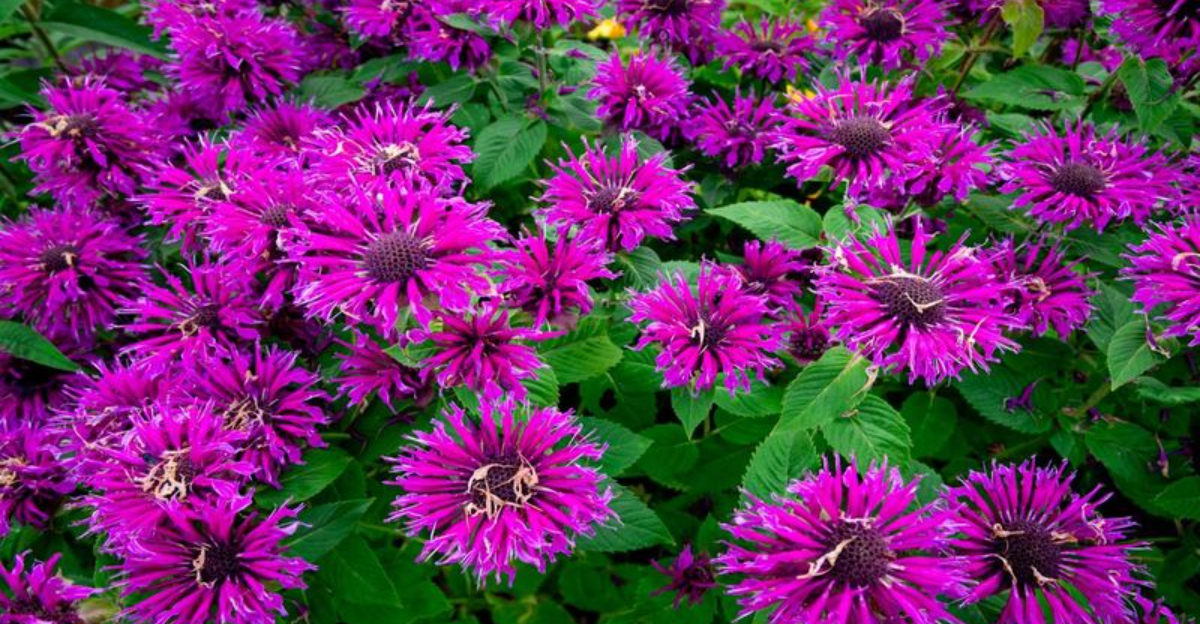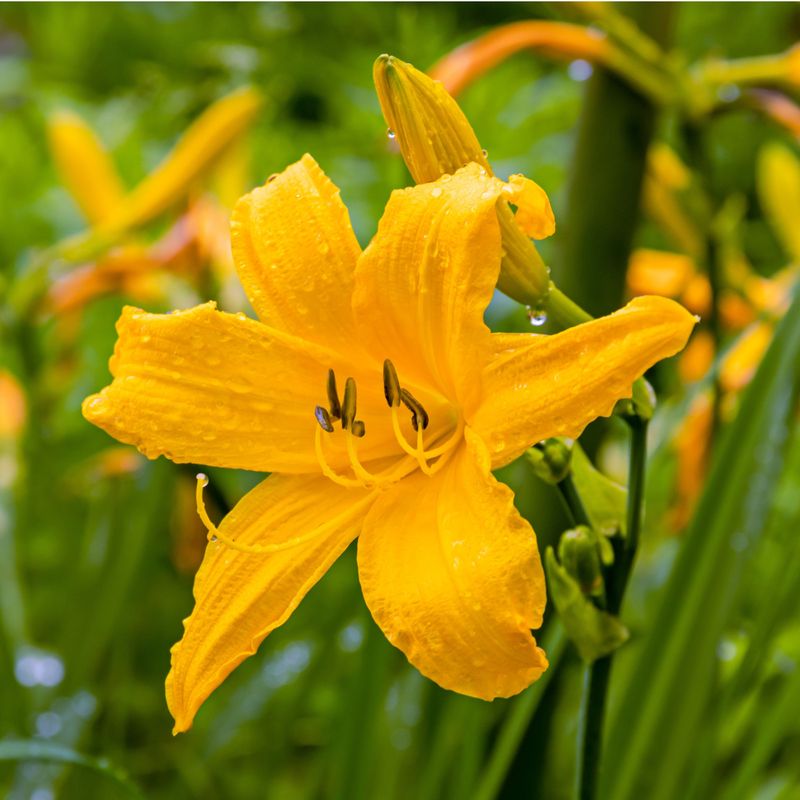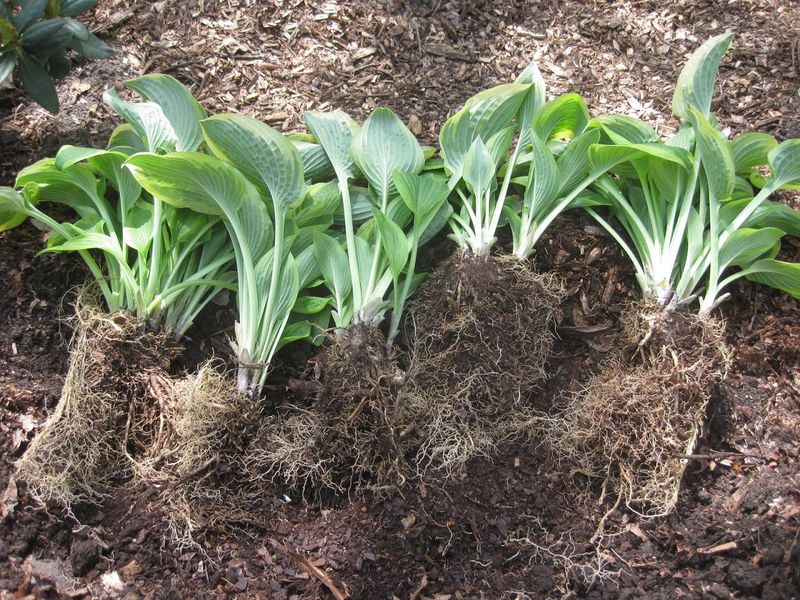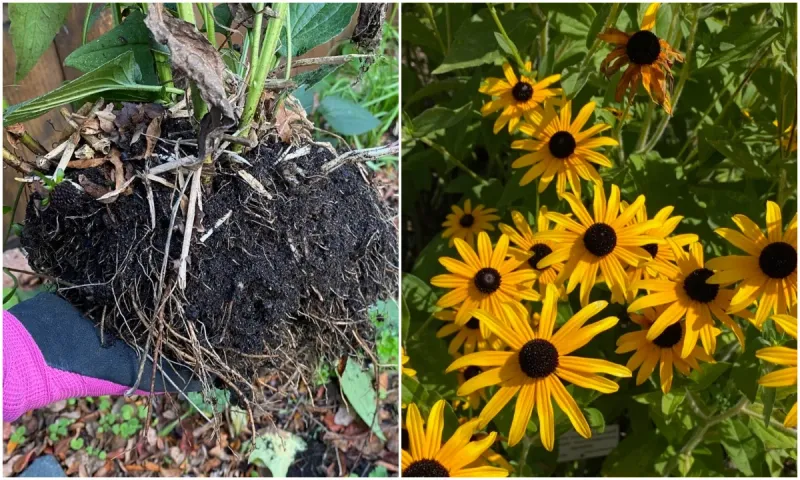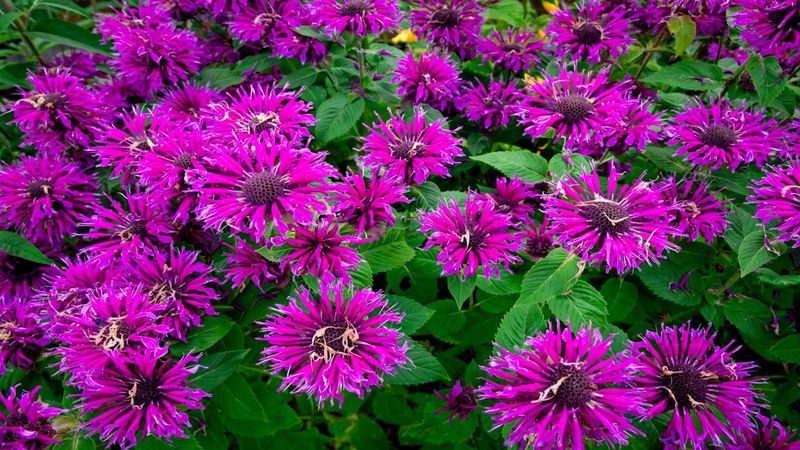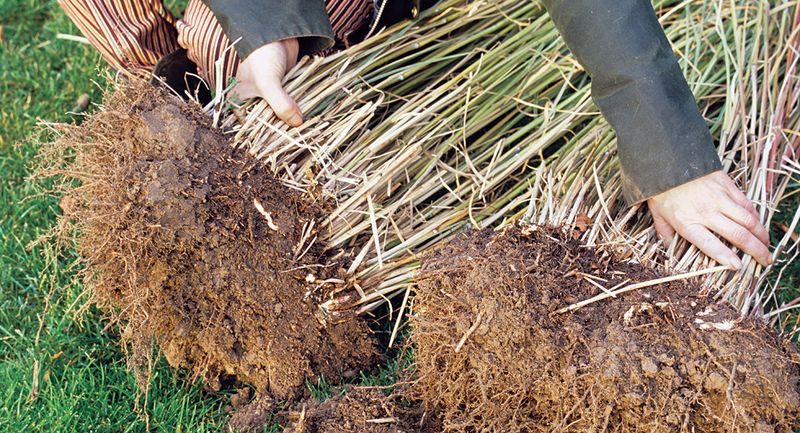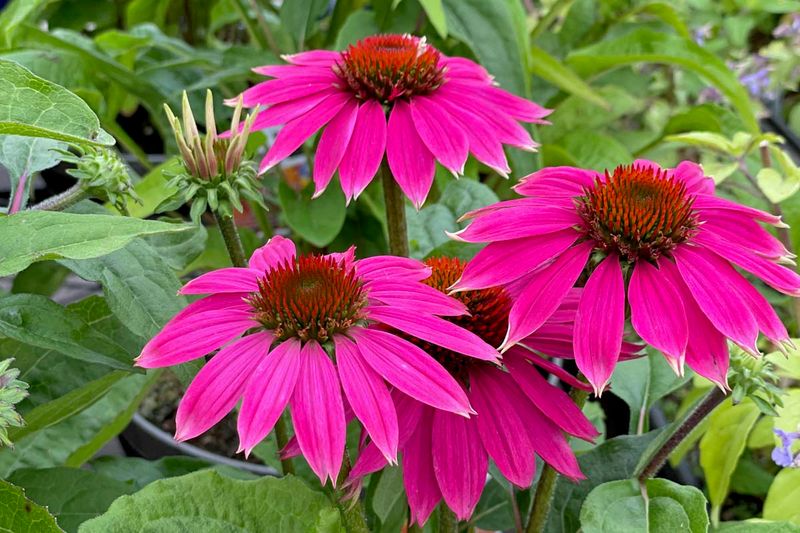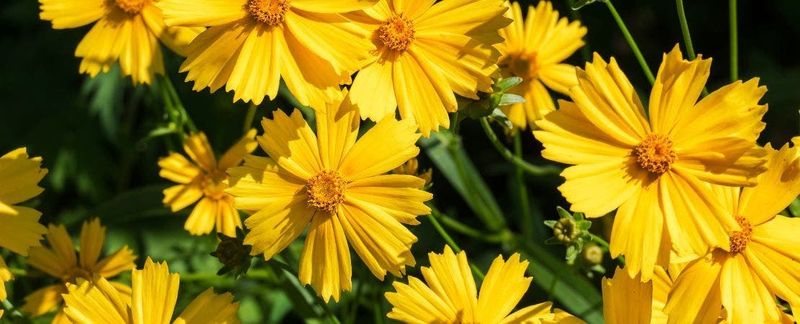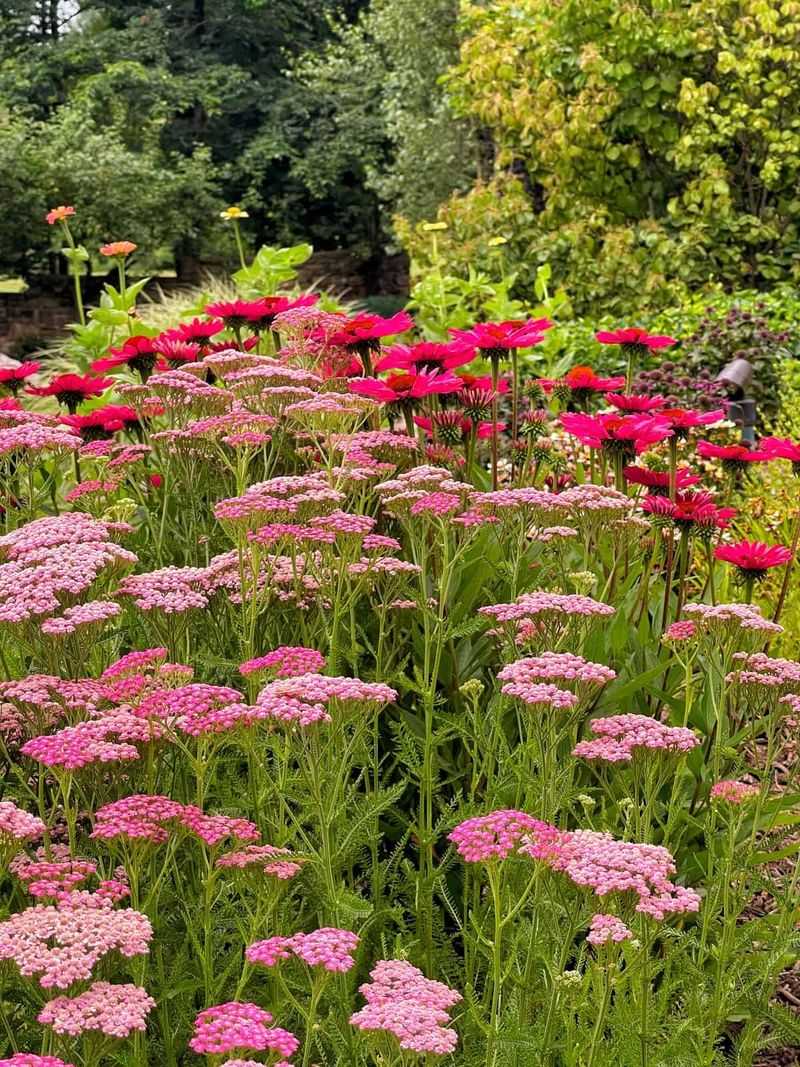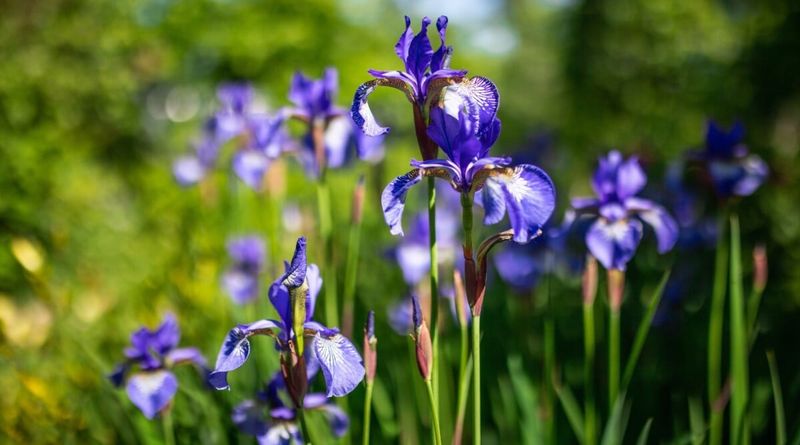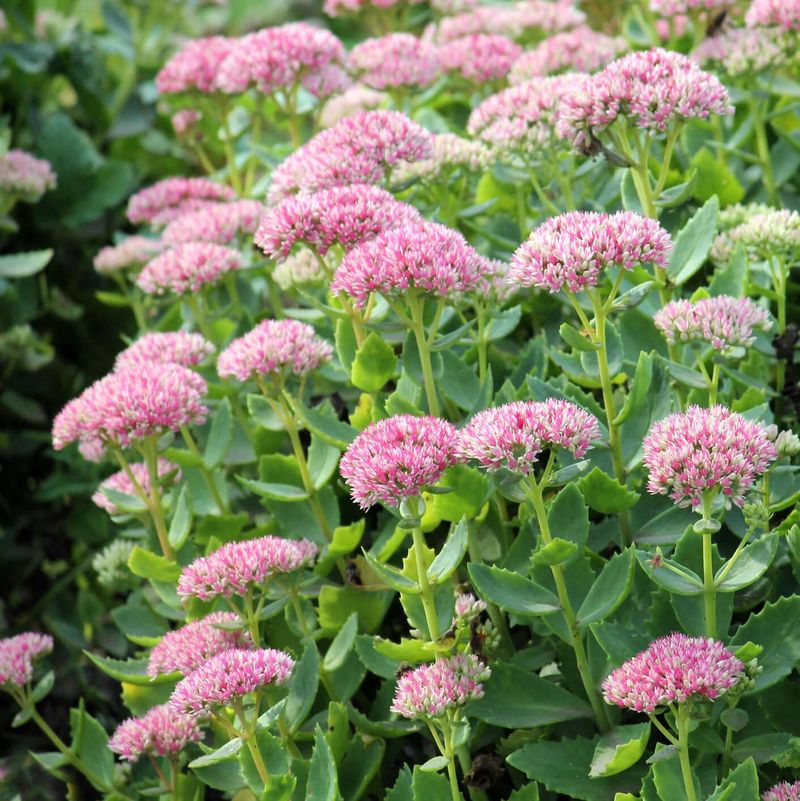Spring is the perfect time to rejuvenate your garden by dividing perennials. This not only encourages robust blooms but also gives you more plants to share or spread throughout your garden.
Here are ten must-divide perennials that promise a season of lush greenery and vibrant flowers.
1. Daylilies (Hemerocallis)
Daylilies are the garden’s drama queens with their flamboyant blooms. However, to keep them performing year after year, dividing them is essential. When new shoots just start to peek through the ground, it’s your cue to dig them up and split.
This not only prevents overcrowding but also stimulates more vigorous growth. Imagine their trumpet-shaped flowers basking in the sun, a result of your tender care.
What’s even more rewarding is sharing these beauties with fellow garden enthusiasts or expanding their presence in your own garden. Daylilies thrive on this cycle of renewal.
2. Hostas
Hostas are like the gentle giants of the shade garden, with their broad leaves and calming presence. Early spring, when their ‘eyes’ emerge, is the time to divide them. This helps manage their size and enhances their appeal.
Picture a cool, shaded spot where hostas create a serene, leafy retreat. By dividing them, you not only control their spread but also promote healthier, more vigorous plants.
It’s an opportunity to introduce their soothing greens and whites into other parts of the garden, creating a harmonious landscape. Hostas reward your efforts with lush foliage.
3. Black-Eyed Susans (Rudbeckia)
Black-Eyed Susans don’t just add a splash of sunshine to your garden; they burst with energy and life. Every 3–5 years, dividing them prevents overcrowding and encourages a riot of blooms.
Think of them as the party-starters in your garden, with their vivacious yellow petals and contrasting centers. This division allows each plant to have ample space to showcase its charm.
Plus, you’ll have plenty to share or expand your sunny areas. Black-Eyed Susans thrive with this periodic refresh, ensuring they remain the stars of your floral show.
4. Bee Balm (Monarda)
Bee Balm is the garden’s own firework display, attracting pollinators with its fiery blossoms. Dividing Bee Balm before it fully leafs out can reduce mildew issues and boost flowering.
Picture a garden buzzing with activity, where bees and butterflies dance around these aromatic blooms. By giving them space, you encourage healthier growth and more vibrant displays.
It’s a way to ensure your garden remains a haven for pollinators while keeping the Bee Balm’s exuberance in check. Share the love by gifting divisions to friends, spreading beauty and biodiversity.
5. Ornamental Grasses
Ornamental grasses bring movement and texture to the garden. Dividing large clumps early in spring, while they’re still dormant, rejuvenates their growth. Envision the gentle sway of Fountain Grass or the structural elegance of Switchgrass, adding rhythm to your garden’s design.
This practice not only revitalizes the plants but also prevents them from becoming too dense. Dividing helps sustain their airy grace and ensures they remain a captivating feature in your landscape.
Share these divisions with fellow gardeners or use them to fill sparse areas, enriching your garden’s tapestry.
6. Coneflowers (Echinacea)
Coneflowers are the quintessential summer bloomers, known for their resilience and vibrant colors. Dividing them encourages more blooms and prevents the centers from thinning. Picture a meadow filled with pink and purple hues, where butterflies dance from flower to flower.
By dividing, you ensure each plant has enough space to flourish, enhancing their beauty and vitality. This not only benefits their appearance but also supports a healthy ecosystem.
Divisions can be shared or used to fill gaps, ensuring a continuous splash of color in your garden throughout the season.
7. Coreopsis
Coreopsis, with its delicate yet tenacious blooms, brings a sunny disposition to any garden. Spring is the season to divide these perennials, encouraging healthier and more abundant flowers.
Imagine a cascade of yellow blossoms, their dainty petals dancing in the wind. By dividing the plants, you reinvigorate their growth and ensure a vibrant display. This process not only benefits the plant’s health but also offers more to spread across your garden or share with friends.
Coreopsis thrives on this renewal, bringing joy with its cheerful presence year after year.
8. Yarrow (Achillea)
Yarrow is the unsung hero of the garden, known for its hardy nature and clusters of tiny flowers. Dividing yarrow every few years keeps its growth compact and encourages vigorous blooming.
Picture a meadow filled with these resilient blooms, standing tall and proud. This division prevents overcrowding and ensures healthier plants, ready to face the growing season.
It’s an opportunity to spread yarrow’s charm to other garden areas or share with others. Yarrow’s adaptability makes it a valuable addition, thriving with minimal fuss, yet offering maximum impact.
9. Siberian Iris
Siberian Iris adds a touch of elegance with its slender leaves and striking blooms. Early spring is the best time to divide them, before significant top growth. Picture their graceful forms swaying by a serene pond or water feature.
Dividing these irises not only helps maintain their vigor but also prevents overcrowding. This ensures a stunning display of blooms, with each plant having room to breathe and thrive.
Sharing divisions or planting them in new locations enhances the garden’s diversity and beauty, making Siberian Iris a cherished perennial.
10. Sedum (Autumn Joy)
Sedum ‘Autumn Joy’ is the garden’s reliable performer, with its succulent leaves and late-season blooms. Dividing sedum keeps the plants compact and prevents flopping under their own weight.
Imagine clusters of pink flowers turning to rich copper as autumn approaches, adding warmth to your garden. By dividing, you ensure each plant remains robust and upright, ready to showcase its seasonal transformation.
This practice not only maintains their health but also provides more plants for different garden areas. Sedum’s adaptability and charm make it a favorite among gardeners.
